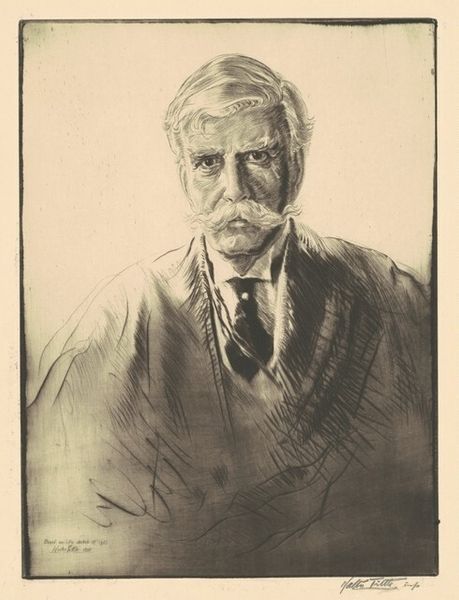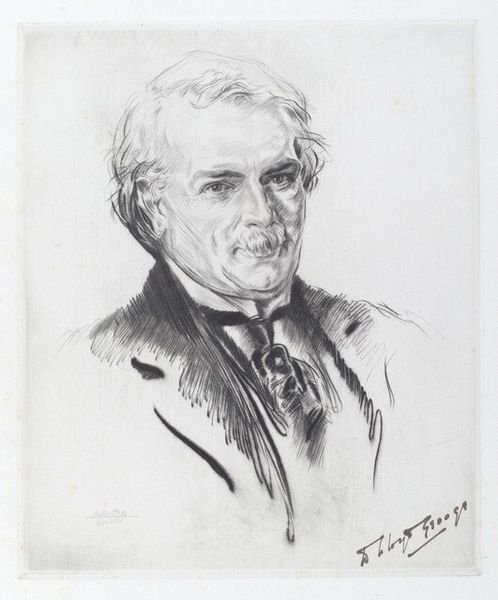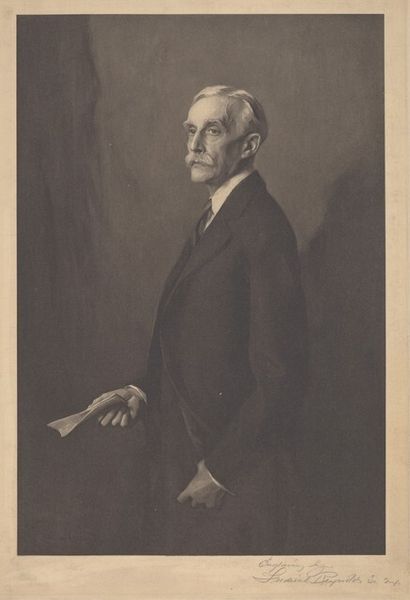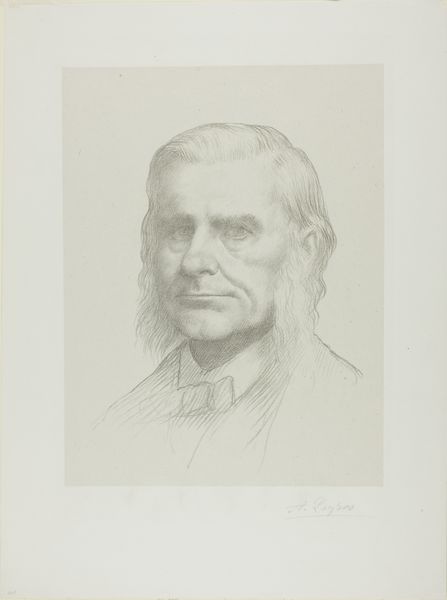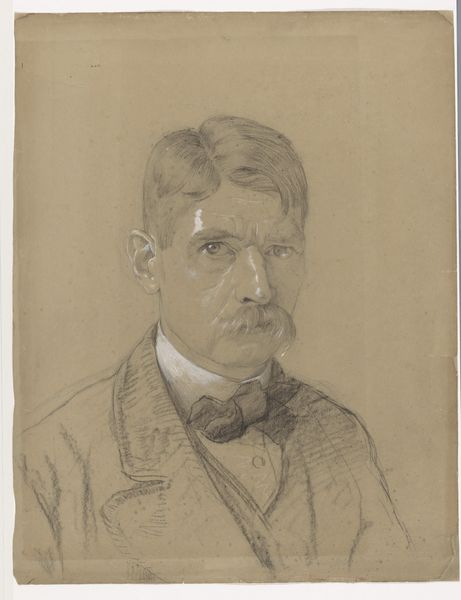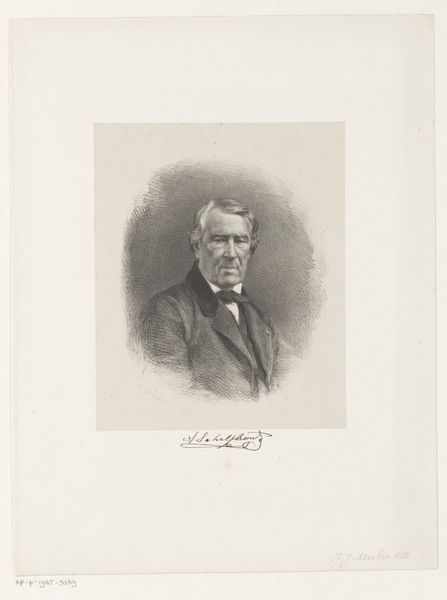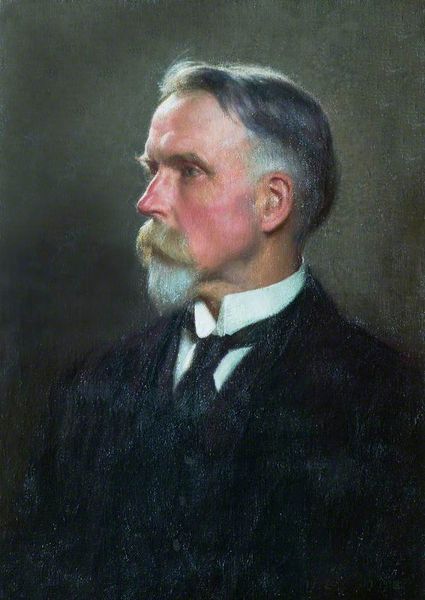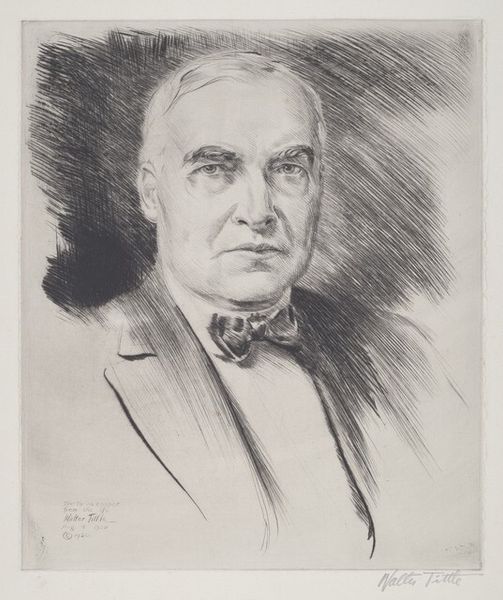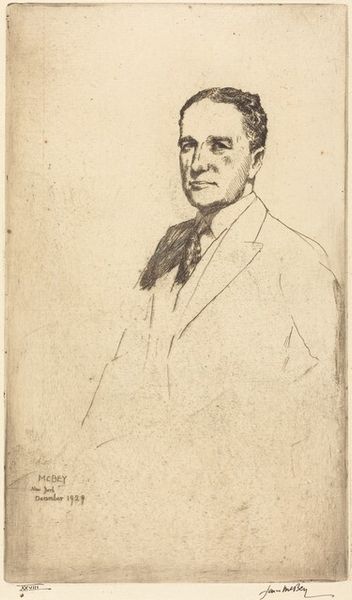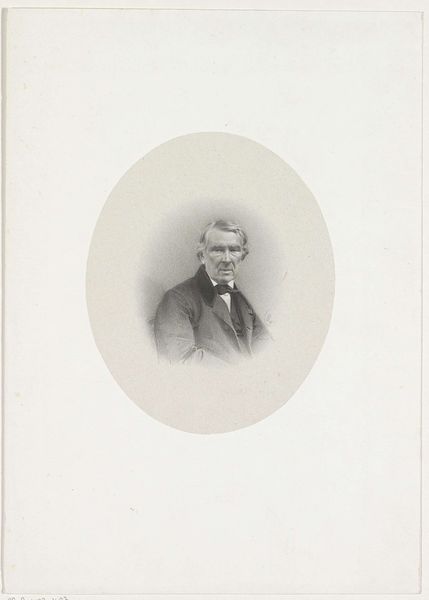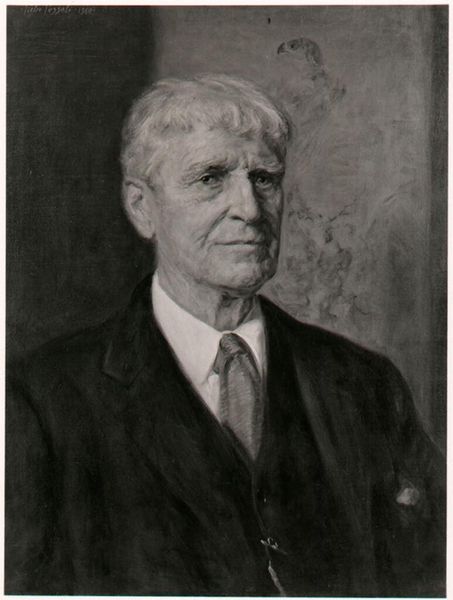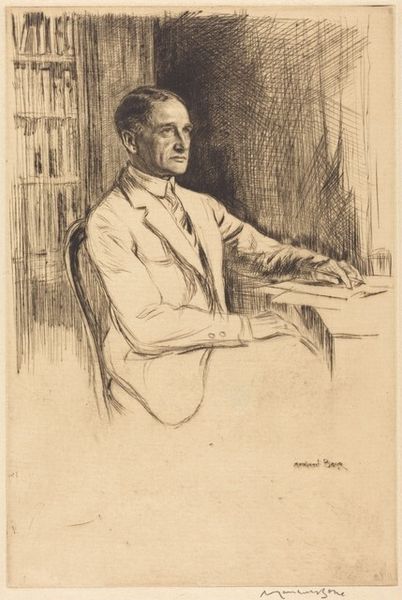
print, etching
#
portrait
#
self-portrait
# print
#
etching
#
caricature
#
portrait drawing
#
portrait art
#
modernism
#
realism
Copyright: National Gallery of Art: CC0 1.0
Editor: This is James McBey's 1915 etching titled "Frank Gibson." The stark contrast between the dark background and the gentleman’s stark attire, somehow makes him seem severe. What stands out to you, looking at this portrait? Curator: What is compelling is McBey's masterful control over the etching process. Notice how he uses the density and direction of the etched lines to define form and texture. The stark contrast you mention isn’t just about light and dark; it's about the very structure of the image, isn't it? Editor: I hadn’t thought about it that way. I was focused on the subject's… air. But you’re right, it's like the etching itself *is* the emotion. Does the figure’s stern look, rendered by line and shadow, change how you perceive the structure of the image? Curator: Precisely. It’s an elegant manipulation of light and shadow, which is primarily achieved through varied, close line work. The gaze becomes an organizing element in the visual field, holding your own. Are we seeing the person, or are we seeing the effect of expertly placed marks? It questions representation. Editor: I see what you mean. So, the "subject" becomes less important than how the artist visually interprets him, which affects how we emotionally respond to those details and marks? Curator: Indeed. McBey isn’t just capturing a likeness, but showcasing the inherent possibilities of the etching medium. It pushes portraiture towards abstraction, toward surface and line, where the means of production are laid bare for contemplation. Editor: That’s a really insightful way of looking at it. It’s not just *who* is portrayed, but *how* the medium informs our experience of the portrait. Thank you. Curator: The pleasure was mine. The inherent materiality, process, and our experience of it all creates meaning, doesn’t it?
Comments
No comments
Be the first to comment and join the conversation on the ultimate creative platform.
